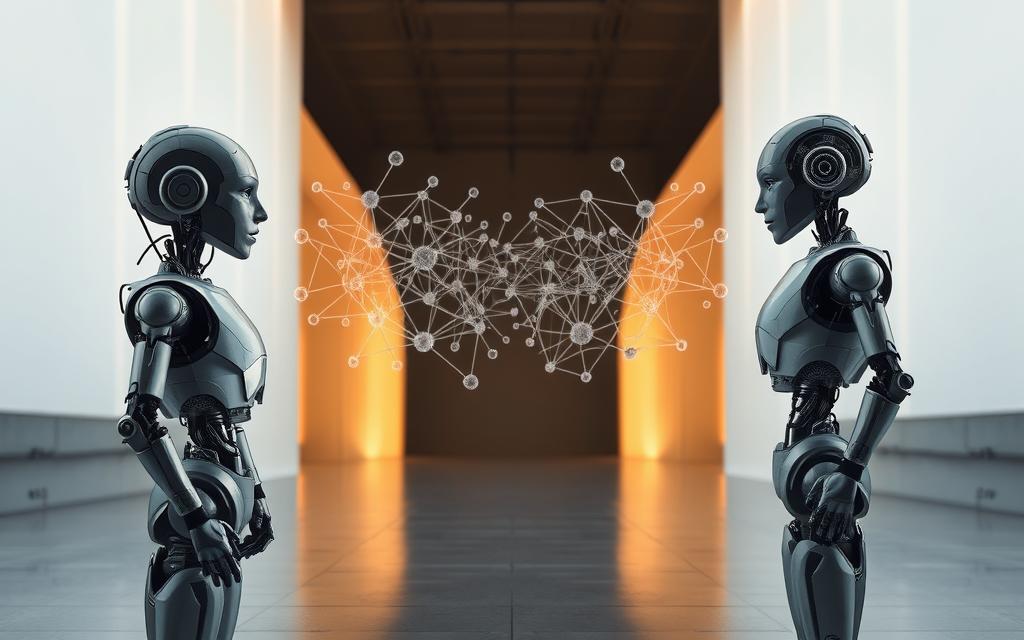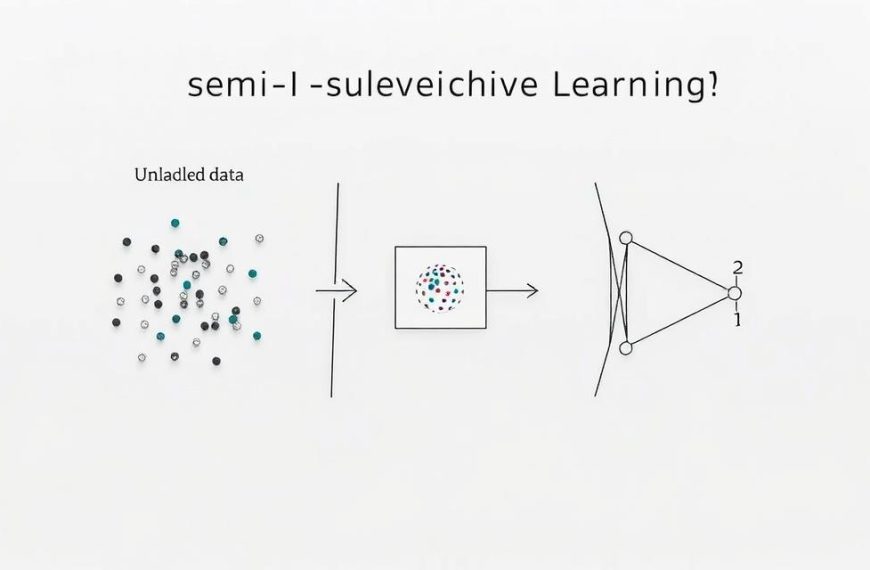Modern technology relies heavily on artificial intelligence systems that adapt and evolve. From personalised film suggestions on streaming platforms to autonomous vehicles navigating motorways, these innovations often stem from two interconnected fields. Though frequently confused, they operate with distinct methodologies.
Traditional approaches involve training algorithms to recognise patterns using structured data. For instance, recommendation engines analyse viewing habits to predict preferences. These systems require human guidance to select relevant features and refine outcomes.
Advanced techniques take automation further through layered neural networks. Facebook’s photo tagging technology exemplifies this approach, processing raw pixel data without explicit programming. This self-directed analysis mimics human decision-making processes at scale.
The relationship between these technologies resembles Russian nesting dolls. One serves as the foundation, while the other represents a specialised development within it. This hierarchy explains why certain applications demand more computational power and complex architectures.
Understanding these distinctions becomes crucial as organisations across Britain adopt smarter solutions. Retailers use predictive analytics for stock management, while healthcare providers employ diagnostic tools with increasing accuracy. Each approach offers unique advantages depending on the task’s complexity.
Introduction to Machine Learning and Deep Learning
The digital landscape thrives on systems that improve autonomously through experience. Early artificial intelligence relied on rigid rules programmed by developers, like chess-playing computers following preset strategies. These systems lacked flexibility until data-driven approaches revolutionised how algorithms adapt.
From Theory to Practical Implementation
Pioneering work in computer science during the 1950s laid groundwork for self-teaching systems. Traditional methods required manual feature selection – imagine teaching spam filters by labelling every email characteristic. Modern techniques automate this process, analysing patterns in banking transactions or social media interactions without constant human input.
Powering Today’s Digital Infrastructure
Neural networks now drive innovations from voice assistants to medical imaging tools. Retailers employ predictive algorithms to forecast seasonal demand, while transport networks use real-time data to optimise routes. These applications demonstrate how layered architectures process unstructured information like speech or photographs.
Data science bridges theoretical concepts with real-world deployment. Supermarkets utilise recommendation engines that refine suggestions based on shopping habits. Energy companies apply predictive models to balance national grid loads, showcasing scalable solutions across sectors.
what is machine learning vs deep learning: A Comparative Analysis
Technological advancement follows a clear hierarchy, much like a tree’s root system. At the broadest level lies artificial intelligence – the overarching concept enabling systems to mimic human cognition. Within this framework, machine learning emerges as the primary branch focused on pattern recognition through data analysis.
Deep learning operates as a specialised offshoot within this structure. Unlike traditional methods requiring manual feature selection, these layered neural networks automatically extract insights from raw inputs. This self-directed approach enables processing of unstructured data like medical scans or voice recordings with minimal human intervention.
The relationship becomes clearer when examining real-world applications. Basic fraud detection systems might use conventional algorithms to flag unusual transactions. More complex tasks like real-time speech translation demand deep architectures capable of interpreting contextual nuances. Organisations across Britain increasingly adopt hybrid strategies, choosing techniques based on problem complexity and available resources.
Industry leaders like IBM emphasise this progressive relationship in their technical documentation. Retailers might combine both approaches – using simpler models for inventory predictions while deploying neural networks for customer sentiment analysis. This tiered implementation reflects the natural evolution from foundational principles to advanced implementations.
Understanding this hierarchy helps businesses allocate resources effectively. While basic predictive tools require modest computing power, deep learning implementations often need specialised hardware. The choice ultimately depends on whether the task benefits from automated feature extraction or operates effectively with human-guided parameters.
Understanding Machine Learning: Concepts and Models
Contemporary businesses across Britain increasingly rely on adaptive systems that refine their operations autonomously. At its core, machine learning enables computers to identify patterns within datasets and improve decision-making without step-by-step programming. This technology thrives on three pillars: pattern recognition, statistical inference, and predictive modelling.
Defining Core Principles
Effective systems analyse historical information to forecast outcomes, whether predicting energy consumption peaks or detecting banking fraud. Supervised methods use labelled datasets like categorised customer reviews, while unsupervised techniques cluster unorganised data such as social media trends. Reinforcement approaches trial different strategies, optimising outcomes through feedback loops.
Algorithmic Applications in Practice
Common learning algorithms include decision trees for credit scoring and support vector machines for image classification. Retailers employ these tools to personalise marketing campaigns based on purchase histories. Linear regression models help logistics firms optimise delivery routes by analysing traffic patterns.
Training data quality directly impacts performance – flawed inputs create unreliable predictions. Financial institutions verify transaction records meticulously before fraud analysis. As new data streams in, systems recalibrate parameters to maintain accuracy.
From NHS diagnostic tools to Transport for London’s congestion forecasts, these learning models demonstrate scalability across sectors. Their success hinges on selecting appropriate architectures matched to specific operational challenges.
Exploring Deep Learning: Concepts and Neural Networks
Advanced computational systems achieve remarkable feats through layered decision-making processes. Unlike traditional approaches, these architectures automatically decipher intricate patterns in raw information like sound waves or handwritten text. This capability stems from multi-tiered structures inspired by biological cognition.
Foundations of Layered Cognition
Deep learning employs artificial neural networks with three or more processing tiers. Input layers receive pixel values or word vectors, while hidden layers transform this data through weighted connections. Output layers then generate predictions, whether identifying tumour cells in scans or forecasting electricity demand.
Architectural Complexity in Practice
Convolutional networks excel at visual analysis through filter layers that detect edges and textures. Recurrent designs process sequential inputs like speech, maintaining memory of previous elements. Long short-term memory units prevent crucial context from fading during extended data streams.
Training these systems demands substantial computational resources and extensive datasets. Backpropagation algorithms adjust connection weights by analysing prediction errors, gradually refining accuracy. British healthcare initiatives leverage such models to analyse MRI scans with unprecedented precision.
Automatic feature extraction distinguishes these learning models from conventional techniques. Financial institutions deploy them to detect subtle fraud patterns across millions of transactions. This self-optimising capability makes neural networks indispensable for handling unstructured data at scale.
Comparative Analysis: Machine Learning Versus Deep Learning
Selecting the right approach resembles choosing tools for different engineering challenges. Conventional techniques and advanced neural architectures address problems through fundamentally distinct pathways. Organisations must weigh technical demands against desired outcomes when implementing intelligent systems.
Differences in Data Requirements and Training Methodologies
Machine learning models demand meticulous preparation of structured datasets. Data scientists manually identify relevant features – like categorising loan applicants by income brackets. These systems often deliver reliable results with tens of thousands of records, making them practical for mid-sized enterprises.
Deep neural networks bypass manual curation by processing raw inputs directly. Facial recognition systems analyse pixel arrays without human-guided filters. However, this automation requires millions of data points and specialised hardware like GPUs. Training periods stretch from days to weeks, compared to hours for conventional algorithms.
Impact on Decision-Making and Accuracy
Transparency remains a key advantage of traditional approaches. Credit scoring models using decision trees allow clear audit trails – crucial for regulated sectors. Deep learning excels in complex pattern recognition, achieving higher accuracy in tasks like real-time speech translation.
The trade-off emerges in interpretability. While deep learning models outperform in handling unstructured data, their layered operations function as black boxes. Healthcare providers might favour simpler algorithms for diagnostic tools requiring explainable outcomes.
British retailers illustrate this balance. Inventory forecasting uses efficient machine learning, while customer sentiment analysis leverages neural networks. Each solution aligns with specific operational needs and resource availability.
Practical Applications and Use Cases in AI
Intelligent systems now shape everyday experiences across Britain. From streaming services to urban transport networks, these technologies demonstrate tangible benefits through diverse implementations. Both conventional and advanced methods address challenges ranging from entertainment personalisation to life-saving diagnostics.
Real-World Examples from Self-Driving Cars to Image Recognition
Recommendation engines showcase machine learning algorithms in consumer tech. Netflix analyses viewing histories using collaborative filtering, while Amazon suggests products based on purchase patterns. These systems process structured data like ratings and browsing durations to predict preferences.
Autonomous vehicles represent deep learning triumphs, processing lidar data and camera feeds in real time. Neural networks identify pedestrians and traffic signs through continuous sensor analysis. Google’s AlphaGo demonstrated this approach’s strategic potential, mastering Go through reinforcement learning rather than programmed rules.
Medical imaging tools leverage convolutional networks for tumour detection in NHS hospitals. Social platforms employ similar architectures for facial recognition, automatically tagging friends in holiday photos. Birdwatching apps like Merlin identify species through smartphone camera inputs with 95% accuracy.
Language processing applications bridge communication gaps globally. Deep learning models power real-time translation services used by UK airports and conversational AI in banking chatbots. Meanwhile, traditional methods still excel in fraud detection systems analysing transaction patterns for British financial institutions.
These learning models collectively transform industries while addressing specific operational needs. Retailers combine both approaches – using simpler algorithms for stock forecasts and neural networks for customer sentiment analysis. The choice depends on data complexity and required interpretability.
Technical Considerations: Data, Hardware and Algorithms
Implementing intelligent systems demands careful evaluation of technical constraints and resource allocation. Organisations must balance computational costs with performance needs, particularly when scaling solutions across departments.
Data Preparation and Processing Frameworks
Machine learning models thrive on structured, labelled datasets curated by data scientists. Retailers analysing customer demographics might spend weeks cleaning purchase histories before training algorithms. In contrast, deep neural networks process raw inputs like social media images directly, eliminating manual feature extraction.
Hardware requirements diverge sharply between approaches. Conventional techniques often run efficiently on standard office computers using CPU processing. Advanced architectures demand GPU clusters – a consideration for NHS trusts deploying medical imaging tools requiring real-time analysis.
Training timelines and energy consumption escalate with complexity. Basic fraud detection systems might train overnight on modest servers. Autonomous vehicle platforms, however, consume weeks of high-performance computing time to refine object recognition capabilities. British universities increasingly partner with tech firms to access specialised infrastructure for data science research.
Choosing between approaches hinges on balancing accuracy needs with operational budgets. While natural language processing tools benefit from layered networks, many financial forecasting tasks achieve optimal results through simpler, interpretable algorithms. This strategic alignment ensures technical investments yield measurable business returns.














